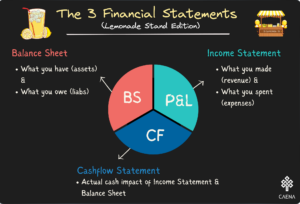5 points to consider when generating financial models for SEIS and EIS advance assurance applications
There is something about the thought of preparing financial forecasts (or model / projections) that makes all founders seize up like deer caught in headlights. Perhaps with the exception of ex-consultants, investment bankers or financial analysts with loads of experience working with numbers.
Unfortunately, this is a task that cannot be avoided for long. For instance, for every UK founder building a startup or small business they intend to scale, one of the first tasks they embark on is to apply for one of the HMRC venture capital schemes. The Seed Enterprise Investment Scheme (SEIS), Enterprise Investment Scheme (EIS) and Social Investment Tax Relief (SITR) are the schemes run by the HMRC which are relevant for small businesses. With the recently increased cap to £250,000 (from £150,000) for the SEIS, it is definitely a good place to start for most entrepreneurs
And surprise surprise, a financial forecast is one of the requirements.
How Does The Process Work?
There is a chicken and egg situation with the process — you need to issue shares to benefit from the scheme but investors need comfort that they will benefit from the tax relief of the venture capital schemes. Thankfully, the HMRC introduced the advance assurance process so companies can obtain provisional approval from the HMRC that they are eligible.
Although the HMRC allows submissions directly through their website, many founders find it worthwhile paying for SEIS / EIS application services from companies such as Seedlegals, Sapphire Capital and Finerva to help them manage the complexity and increase chances of approval.
Financial Forecasts
A key part of the advance assurance application is the financial forecast. This is where it gets tricky. The aforementioned SEIS / EIS packages help founders interpret the requirements, simplify some of the steps and review submissions. What they do NOT do is offer assistance with preparing the financial forecast.
So how do time-pressured, frantic founders sort out this essential requirement to submit a financial forecast? There are two approaches we have seen in our discussions with other founders which are similar to how they build financial models for investors (i) hire a consultant or (ii) go DIY (do-it-yourself)
“It took me a few months with a business mentor to update my business plan and financial forecast” — U.K. Edutech Startup Founder
If you are hiring a consultant to build your financial model, be sure they know what the HMRC requirements are and are not simply rehashing a jack of all trades template.
For founders who can’t afford the time, money or uncertainty of hiring a consultant, there are five (5) considerations to be mindful of when building out an HMRC-compliant financial forecast all by yourself.
- Alignment with your business plan: remember your financial forecast is an extension of your business plan even though they may be submitted in separate documents. Ensure that the figures and growth projections are in tune.
- Three year projections: the length of the projections is not optional. The HMRC wants 3 periods of ANNUAL projections i.e. just 3 years. You know that month on month SaaS model extending to column BX on your excel? That will not pass muster, keep it for that pesky VC analyst. If you need more details on how to put together the forecast, take a look at this short video.
- No Historicals: regular financial models for internal use or investor conversations consist of historical financials and projections. The HMRC does not care about what you’ve achieved in the past. This is a forecast and probably named so for a reason.
- Submission Format: this is a classic example of know-your-audience we have talked about as being absolutely essential to fundraising. Unlike your Angels, VCs and banks, HMRC wants your forecasts “ideally in PDF” which I read as “please don’t send in your fancy Excel or Google Sheets.” And while you are at it be mindful of the 8MB cap for your entire attachments. If your attachments exceed 8MB, you will have to send separate emails all under 8MB.
- Adherence to risk to capital requirement: the HMRC very helpfully introduced this relatively recent requirement to EIS / SEIS advance assurance applications. There are two broad and subjective components (i) the company must grow as a result of the equity transaction and (ii) it must be a risky proposition. Although these are typically answered in other parts of the submission, it is important to ensure your model is consistent with this. See point 1.
Need Help Building Your Financial Forecast?
These may seem like a laundry list of requirements which do not do much to help a founder whose submission is being held up by the financial forecast. That is because yes it is. That is Caena comes in.
If you would rather skip the pain and want to consider a ready-made solution, with Caena and our Advance Assurance offering, you can generate your financial forecast in less than 30 minutes.





